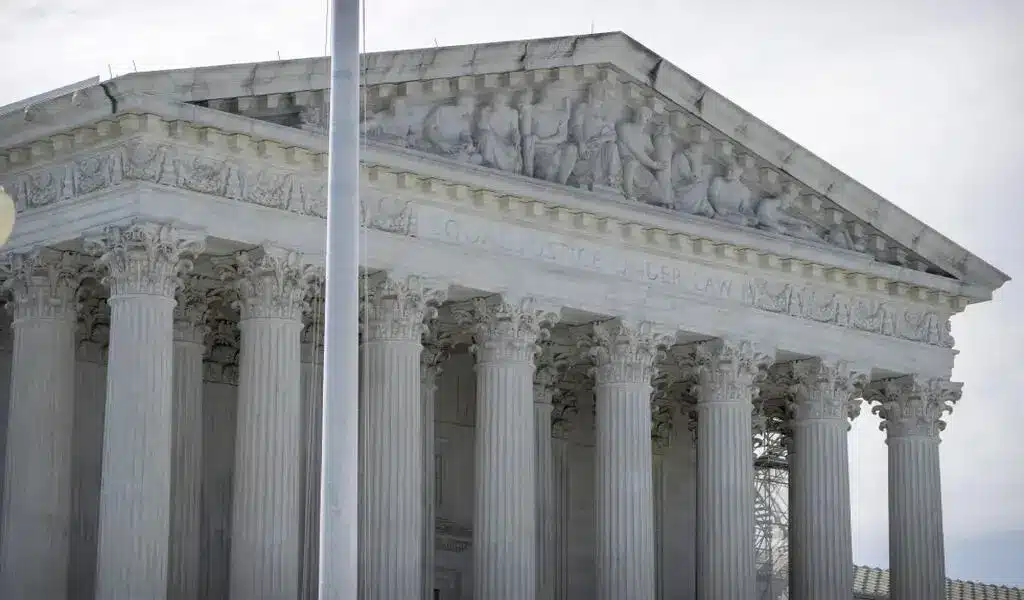News
Regulatory Shortcomings Open the Way to More Dams on the Mekong

.
Plans for more dams along the Mekong are causing concern among environmentalists and pressure groups. But the body tasked with overseeing such projects has limited powers to impose restrictions and controls.
The previously free-flowing waters of the Mekong River are set to hit another barrier with plans for a new dam.
If built, the dam in the town of Pak Beng in northern Laos would be one of the biggest in Southeast Asia. More than 1,600 hectares of farmland would be flooded and at least 6,700 people would be resettled to make way for the 1,230-megawatt facility, which would produce energy mostly for export to Thailand.
While advocates have said the dam would produce reliable energy for local communities and much-needed revenue for the government, concerns are intensifying in Laos and internationally about the negative effects.
However, whether opponents can make any headway is uncertain as the Mekong River Commission (MRC) – the body tasked with promoting sustainable development along the river – has limited powers.
The MRC was created in 1995 as part of the Mekong Agreement between Thailand, Laos, Cambodia and Vietnam. But it has no power to stop or regulate any development projects on the Mekong.
Chief executive of the MRC, Pham Tuan Phan acknowledges that there is a big gap between what campaigners would like the organisation to do and what it can actually achieve.
“It’s not a supranational organisation or a regulatory body … but a regional river basin organisation where the member countries discuss their needs, concerns and challenges in good faith, following a clear set of rules and agreement,” he said.
Based on the agreement, member countries are required to hold a Prior Consultation process before beginning any mainstream project. Discussions must be made about any transboundary impact the project could bring to the region before a unanimous consensus is reached on how to proceed with the proposal. However, the agreement is not legally binding and member countries can essentially do whatever they want.
The organisation’s limited bite was put into the spotlight when two dams that met with widespread criticism at the planning stage still went ahead – the Xayaburi hydropower project in northern Laos is now 67 per cent complete while further south, the Don Sahong dam is forging ahead.
Both faced strong opposition, not only from residents along the Mekong, but also many conservationists around the world. They fear the dams will destroy the river’s ecology and wipe out hundreds of fish species that feed the region’s economy and populations.
“The MRC agreement is very weak and the MRC agreement doesn’t work,” said Tek Vannara, an active environmental advocate from the NGO Forum of Cambodia. “We need them to respect the law, the standard. They need to consult with the people.”
The commission is fully aware it has not delivered what some had hoped for.
“Of course, nothing is perfect. We are currently taking lessons from (these) two cases and taking steps to improve the process in the future,” Phan said. But there is not much it can do.
DYSFUNCTIONAL DIPLOMACY
Mega projects are spreading across the Mekong, both on its mainstream and tributaries. Seven hydropower dams have been built on the Upper Mekong in China, where it is known as the Lancang River, and 21 more have been planned. In the Lower Mekong Basin – in addition to the two mainstream dams being built – 10 more have been proposed.
If all the dams are built, there are concerns about the impact they will have on the Mekong. There have been calls for the MRC to do more to assess the implications of the developments and intervene if necessary, even if that means extending its remit.
However, Phan said the MRC is meeting its goals, maintaining that the member countries have followed the rules and no extra powers are necessary.
“The member countries have respected the Mekong Agreement for more than two decades in the spirit of Mekong cooperation. No member country has broken the agreement,” he said.
Looking back at the Xayaburi and Don Sahong projects, the MRC did follow the procedures stipulated in the 1995 agreement, with a public consultation process.
But some critics have said that the process was flawed and concerns were not taken into consideration. Niwat Roykaew, a resident of Chiang Rai in northern Thailand and leader of the Rak Chiang Khong conservation group, said that the process for the Don Sahong dam was not designed to take into account the perspectives of local communities.
“(The process) is to enable the projects. You consulted local residents and they disagreed with the plan. Still you proceeded to build the dams, claiming you had followed the procedures. It doesn’t work. We share the same world and the same land. I think we need to think together,” he said.
For example, at the dam sites, residents were not asked if they wanted to be resettled; they were simply asked to move and receive compensation determined by the Communist government.
The shortcomings of the consultation process were acknowledged by the MRC.
“The Xayaburi and Don Sahong were our first two test cases to follow through the prior consultation process, so we might not have been perfect in handling the cases,” admitted Phan.
“We are reviewing the two cases and taking lessons out of them. One of the lessons we have is to offer more opportunities for the stakeholders to voice their concerns in a meaningful way.”
NEW PLAYER IN MEKONG DIPLOMACY
As doubts continue about the MRC’s role in the development of existing projects, questions are also being raised about its future. It is losing its financial support, with member countries and other agencies cutting their funding for the next five years by half – from US$115 million in 2011-2015 to US$53 million for 2016-2020. About half of its employees will also lose their jobs.
“The MRC was never a strong mechanism and it’s not an appropriate measure to address these concerns,” said Tanja Venisnik, a lawyer and human rights specialist.
As the future role of the MRC continues to come into question, China is at the heart of a new grouping that aims to oversee development along the Mekong.
The Lancang-Mekong Cooperation (LMC) – a loose pact between the five Mekong countries and China – aims to narrow the gaps and promote development among its members, including in areas such as water management and utilisation.
“China is trying to gain more influence in the region. The Mekong River Commission is losing its strength. It’s becoming weaker and weaker,” said Venisnik.
This comes as China promotes its One Belt, One Road strategy, pushing for a greater role on the global stage through connectivity and cooperation with other countries, including those in Southeast Asia.
However, whether the LMC will reflect the views of concerned communities remains an unanswered question. The region’s demand for energy is growing, and the Mekong’s natural ability to meet that demand may mean that such concerns continue to be a low priority.
By Pichayada Promchertchoo | CNA
Explore the whole series: Power Struggle – Damming the Mekong. Follow Pichayada Promchertchoo on Twitter @PichayadaCNA
News
Trudeau’s Gun Grab Could Cost Taxpayers a Whopping $7 Billion

A recent report indicates that since Trudeau’s announcement of his gun buyback program four years ago, almost none of the banned firearms have been surrendered.
The federal government plans to purchase 2,063 firearm models from retailers following the enactment of Bill C-21, which amends various Acts and introduces certain consequential changes related to firearms. It was granted royal assent on December 15 of last year.
This ban immediately criminalized the actions of federally-licensed firearms owners regarding the purchase, sale, transportation, importation, exportation, or use of hundreds of thousands of rifles and shotguns that were previously legal.
The gun ban focused on what it termed ‘assault-style weapons,’ which are, in reality, traditional semi-automatic rifles and shotguns that have enjoyed popularity among hunters and sport shooters for over a century.
In May 2020, the federal government enacted an Order-in-Council that prohibited 1,500 types of “assault-style” firearms and outlined specific components of the newly banned firearms. Property owners must adhere to the law by October 2023.
Trudeau’s Buyback Hasn’t Happened
“In the announcement regarding the ban, the prime minister stated that the government would seize the prohibited firearms, assuring that their lawful owners would be ‘grandfathered’ or compensated fairly.” “That hasn’t happened,” criminologist Gary Mauser told Rebel News.
Mauser projected expenses ranging from $2.6 billion to $6.7 billion. The figure reflects the compensation costs amounting to $756 million, as outlined by the Parliamentary Budget Office (PBO).
“The projected expenses for gathering the illegal firearms are estimated to range from $1.6 billion to $7 billion.” “This range estimate increases to between $2.647 billion and $7 billion when compensation costs to owners are factored in,” Mauser stated.
Figures requested by Conservative MP Shannon Stubbs concerning firearms prohibited due to the May 1, 2020 Order In Council reveal that $72 million has been allocated to the firearm “buyback” program, yet not a single firearm has been confiscated to date.
In a recent revelation, Public Safety Canada disclosed that the federal government allocated a staggering $41,094,556, as prompted by an order paper question from Conservative Senator Don Plett last September, yet yielded no tangible outcomes.
An internal memo from late 2019 revealed that the Liberals projected their politically motivated harassment would incur a cost of $1.8 billion.
Enforcement efforts Questioned
By December 2023, estimates from TheGunBlog.ca indicate that the Liberals and RCMP had incurred or were responsible for approximately $30 million in personnel expenses related to the enforcement efforts. The union representing the police service previously stated that the effort to confiscate firearms is a “misdirected effort” aimed at ensuring public safety.
“This action diverts crucial personnel, resources, and funding from tackling the more pressing and escalating issue of criminal use of illegal firearms,” stated the National Police Federation (NPF).
The Canadian Sporting Arms & Ammunition Association (CSAAA), representing firearms retailers, has stated it will have “zero involvement” in the confiscation of these firearms. Even Canada Post held back from providing assistance due to safety concerns.
The consultant previously assessed that retailers are sitting on almost $1 billion worth of inventory that cannot be sold or returned to suppliers because of the Order-In-Council.
“Despite the ongoing confusion surrounding the ban, after four years, we ought to be able to address one crucial question.” Has the prohibition enhanced safety for Canadians? Mauser asks.
Illegally Obtained Firearms are the Problem
Statistics Canada reports a 10% increase in firearm-related violent crime between 2020 and 2022, rising from 12,614 incidents to 13,937 incidents. In that timeframe, the incidence of firearm-related violent crime increased from 33.7 incidents per 100,000 population in 2021 to 36.7 incidents the subsequent year.
“This marks the highest rate documented since the collection of comparable data began in 2009,” the criminologist explains.
Supplementary DataData indicates that firearm homicides have risen since 2020. “The issue lies not with lawfully-held firearms,” Mauser stated.
Firearms that have been banned under the Order-in-Council continue to be securely stored in the safes of their lawful owners. The individuals underwent a thorough vetting process by the RCMP and are subject to nightly monitoring to ensure there are no infractions that could pose a risk to public safety.
“The firearms involved in homicides were seldom legally owned weapons wielded by their rightful owners,” Mauser continues. The number of offenses linked to organized crime has surged from 4,810 in 2016 to a staggering 13,056 in 2020.
“If those in power … aim to diminish crime and enhance public safety, they ought to implement strategies that effectively focus on offenders and utilize our limited tax resources judiciously to reach these objectives,” he stated.
Related News:
Millennials in Canada Have Turned their Backs on Justin Trudeau
Millennials in Canada Have Turned their Backs on Justin Trudeau
News
Google’s Search Dominance Is Unwinding, But Still Accounting 48% Search Revenue

Google is so closely associated with its key product that its name is a verb that signifies “search.” However, Google’s dominance in that sector is dwindling.
According to eMarketer, Google will lose control of the US search industry for the first time in decades next year.
Google will remain the dominant search player, accounting for 48% of American search advertising revenue. And, remarkably, Google is still increasing its sales in the field, despite being the dominating player in search since the early days of the George W. Bush administration. However, Amazon is growing at a quicker rate.
Google’s Search Dominance Is Unwinding
Amazon will hold over a quarter of US search ad dollars next year, rising to 27% by 2026, while Google will fall even more, according to eMarketer.
The Wall Street Journal was first to report on the forecast.
Lest you think you’ll have to switch to Bing or Yahoo, this isn’t the end of Google or anything really near.
Google is the fourth-most valued public firm in the world. Its market worth is $2.1 trillion, trailing just Apple, Microsoft, and the AI chip darling Nvidia. It also maintains its dominance in other industries, such as display advertisements, where it dominates alongside Facebook’s parent firm Meta, and video ads on YouTube.
To put those “other” firms in context, each is worth more than Delta Air Lines’ total market value. So, yeah, Google is not going anywhere.
Nonetheless, Google faces numerous dangers to its operations, particularly from antitrust regulators.
On Monday, a federal judge in San Francisco ruled that Google must open up its Google Play Store to competitors, dealing a significant blow to the firm in its long-running battle with Fortnite creator Epic Games. Google announced that it would appeal the verdict.
In August, a federal judge ruled that Google has an illegal monopoly on search. That verdict could lead to the dissolution of the company’s search operation. Another antitrust lawsuit filed last month accuses Google of abusing its dominance in the online advertising business.
Meanwhile, European regulators have compelled Google to follow tough new standards, which have resulted in multiple $1 billion-plus fines.

Pixa Bay
Google’s Search Dominance Is Unwinding
On top of that, the marketplace is becoming more difficult on its own.
TikTok, the fastest-growing social network, is expanding into the search market. And Amazon has accomplished something few other digital titans have done to date: it has established a habit.
When you want to buy anything, you usually go to Amazon, not Google. Amazon then buys adverts to push companies’ products to the top of your search results, increasing sales and earning Amazon a greater portion of the revenue. According to eMarketer, it is expected to generate $27.8 billion in search revenue in the United States next year, trailing only Google’s $62.9 billion total.
And then there’s AI, the technology that (supposedly) will change everything.
Why search in stilted language for “kendall jenner why bad bunny breakup” or “police moving violation driver rights no stop sign” when you can just ask OpenAI’s ChatGPT, “What’s going on with Kendall Jenner and Bad Bunny?” in “I need help fighting a moving violation involving a stop sign that wasn’t visible.” Google is working on exactly this technology with its Gemini product, but its success is far from guaranteed, especially with Apple collaborating with OpenAI and other businesses rapidly joining the market.
A Google spokeswoman referred to a blog post from last week in which the company unveiled ads in its AI overviews (the AI-generated text that appears at the top of search results). It’s Google’s way of expressing its ability to profit on a changing marketplace while retaining its business, even as its consumers steadily transition to ask-and-answer AI and away from search.

Google has long used a single catchphrase to defend itself against opponents who claim it is a monopoly abusing its power: competition is only a click away. Until recently, that seemed comically obtuse. Really? We are going to switch to Bing? Or Duck Duck Go? Give me a break.
But today, it feels more like reality.
Google is in no danger of disappearing. However, every highly dominating company faces some type of reckoning over time. GE, a Dow mainstay for more than a century, was broken up last year and is now a shell of its previous dominance. Sears declared bankruptcy in 2022 and is virtually out of business. US Steel, long the foundation of American manufacturing, is attempting to sell itself to a Japanese corporation.
SOURCE | CNN
News
The Supreme Court Turns Down Biden’s Government Appeal in a Texas Emergency Abortion Matter.

(VOR News) – A ruling that prohibits emergency abortions that contravene the Supreme Court law in the state of Texas, which has one of the most stringent abortion restrictions in the country, has been upheld by the Supreme Court of the United States. The United States Supreme Court upheld this decision.
The justices did not provide any specifics regarding the underlying reasons for their decision to uphold an order from a lower court that declared hospitals cannot be legally obligated to administer abortions if doing so would violate the law in the state of Texas.
Institutions are not required to perform abortions, as stipulated in the decree. The common populace did not investigate any opposing viewpoints. The decision was made just weeks before a presidential election that brought abortion to the forefront of the political agenda.
This decision follows the 2022 Supreme Court ruling that ended abortion nationwide.
In response to a request from the administration of Vice President Joe Biden to overturn the lower court’s decision, the justices expressed their disapproval.
The government contends that hospitals are obligated to perform abortions in compliance with federal legislation when the health or life of an expectant patient is in an exceedingly precarious condition.
This is the case in regions where the procedure is prohibited. The difficulty hospitals in Texas and other states are experiencing in determining whether or not routine care could be in violation of stringent state laws that prohibit abortion has resulted in an increase in the number of complaints concerning pregnant women who are experiencing medical distress being turned away from emergency rooms.
The administration cited the Supreme Court’s ruling in a case that bore a striking resemblance to the one that was presented to it in Idaho at the beginning of the year. The justices took a limited decision in that case to allow the continuation of emergency abortions without interruption while a lawsuit was still being heard.
In contrast, Texas has been a vocal proponent of the injunction’s continued enforcement. Texas has argued that its circumstances are distinct from those of Idaho, as the state does have an exemption for situations that pose a significant hazard to the health of an expectant patient.
According to the state, the discrepancy is the result of this exemption. The state of Idaho had a provision that safeguarded a woman’s life when the issue was first broached; however, it did not include protection for her health.
Certified medical practitioners are not obligated to wait until a woman’s life is in imminent peril before they are legally permitted to perform an abortion, as determined by the state supreme court.
The state of Texas highlighted this to the Supreme Court.
Nevertheless, medical professionals have criticized the Texas statute as being perilously ambiguous, and a medical board has declined to provide a list of all the disorders that are eligible for an exception. Furthermore, the statute has been criticized for its hazardous ambiguity.
For an extended period, termination of pregnancies has been a standard procedure in medical treatment for individuals who have been experiencing significant issues. It is implemented in this manner to prevent catastrophic outcomes, such as sepsis, organ failure, and other severe scenarios.
Nevertheless, medical professionals and hospitals in Texas and other states with strict abortion laws have noted that it is uncertain whether or not these terminations could be in violation of abortion prohibitions that include the possibility of a prison sentence. This is the case in regions where abortion prohibitions are exceedingly restrictive.
Following the Supreme Court’s decision to overturn Roe v. Wade, which resulted in restrictions on the rights of women to have abortions in several Republican-ruled states, the Texas case was revisited in 2022.
As per the orders that were disclosed by the administration of Vice President Joe Biden, hospitals are still required to provide abortions in cases that are classified as dire emergency.
As stipulated in a piece of health care legislation, the majority of hospitals are obligated to provide medical assistance to patients who are experiencing medical distress. This is in accordance with the law.
The state of Texas maintained that hospitals should not be obligated to provide abortions throughout the litigation, as doing so would violate the state’s constitutional prohibition on abortions. In its January judgment, the 5th United States Circuit Court of Appeals concurred with the state and acknowledged that the administration had exceeded its authority.
SOURCE: AP
SEE ALSO:
Could Last-Minute Surprises Derail Kamala Harris’ Campaign? “Nostradamus” Explains the US Poll.
-

 News3 years ago
News3 years agoLet’s Know About Ultra High Net Worth Individual
-
Entertainment2 years ago
Mabelle Prior: The Voice of Hope, Resilience, and Diversity Inspiring Generations
-

 Health3 years ago
Health3 years agoHow Much Ivermectin Should You Take?
-

 Tech2 years ago
Tech2 years agoTop Forex Brokers of 2023: Reviews and Analysis for Successful Trading
-

 Lifestyles2 years ago
Lifestyles2 years agoAries Soulmate Signs
-

 Movies2 years ago
Movies2 years agoWhat Should I Do If Disney Plus Keeps Logging Me Out of TV?
-

 Health3 years ago
Health3 years agoCan I Buy Ivermectin Without A Prescription in the USA?
-

 Learning2 years ago
Learning2 years agoVirtual Numbers: What Are They For?

